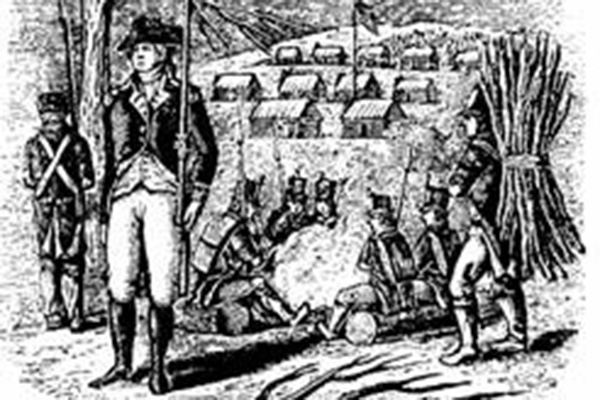One particular winter proved to be brutally harsh for the soldiers fighting in the Revolutionary War – and it wasn’t the winter at Valley Forge.
One of the enduring stories about the American Revolutionary War concerns the winter encampment of General George Washington and his army at Valley Forge, Pennsylvania, in 1777-1778. As the story is usually told, that winter was especially severe, with record-setting snowfall and below freezing temperatures. But the general and his men bore the hardships with quiet courage, setting an example of patriotism that has endured for over two centuries. In reality, it wasn’t like that at all.
The “Hard Winter” of the War
To begin with, the winter of 1777-1778 was not all that severe. In comparison with most winters in the area, it was actually relatively mild. Two years later, however, it was a different story. The winter of 1779-1780, according to what records there are, was the coldest in 400 years. For the first time in recorded history, the rivers in southern Virginia froze over, as did the upper Chesapeake Bay. In January, the daily high in Philadelphia rose above freezing only once. The same month saw “one of the most tremendous snowstorms ever remembered,” according to an army surgeon at the time. Soldiers’ tents were blown away, leaving many of the men to face the elements without shirts or shoes, to say nothing of coats. For many years afterward, when people spoke of the “hard winter,” it was that winter they had in mind.
The Hardships of the Soldiers
There were over 7,000 soldiers encamped with Washington at Morristown, New Jersey, during the “hard winter.” And the extreme weather was only one of their problems. They were also badly clothed and starving. One private wrote later that “we were absolutely, literally starved.” The only thing he had eaten in four days, he said, was “a little black birch bark which I gnawed off a stick of wood….” In January, General Nathanael Greene wrote, “The Army is upon the eve of disbanding for want of Provisions.” The army held together, but there were desertions almost every day.
The Prospect of Mutiny
Spring eventually brought an end to the bitter weather, but it did little to ease the threat of starvation. Supplies were frequently late, and almost never sufficient. After the tribulations of the winter, the soldiers had little patience left. In May, on the front line in Connecticut, there was a near mutiny as soldiers, protesting their conditions, refused their officers’ commands and threatened them with bayonets. The arrival of a shipment of meat soon after prevented the rebellion from spreading, but the next winter there were continuing signs of unrest among the troops.
The true story of the “hard winter” at Morristown provides a corrective to the legendary story of the “silent suffering” presumed to have taken place at Valley Forge. Throughout the war, soldiers rightly complained about their conditions, often publicly, and often at great risk to themselves. And yet, for the most part, they continued to struggle on behalf of the ideas and ideals that were important to them. The story of Morristown celebrates their endurance more honestly than the story of Valley Forge.
Source:
- Raphael, Ray. “America’s Worst Winter Ever.”








